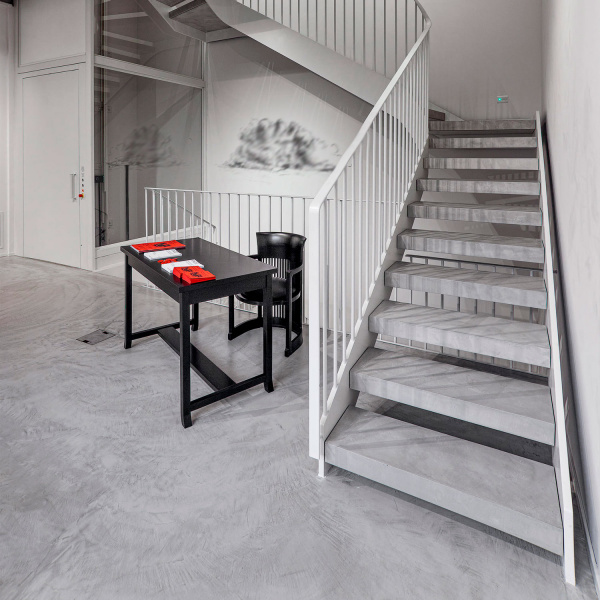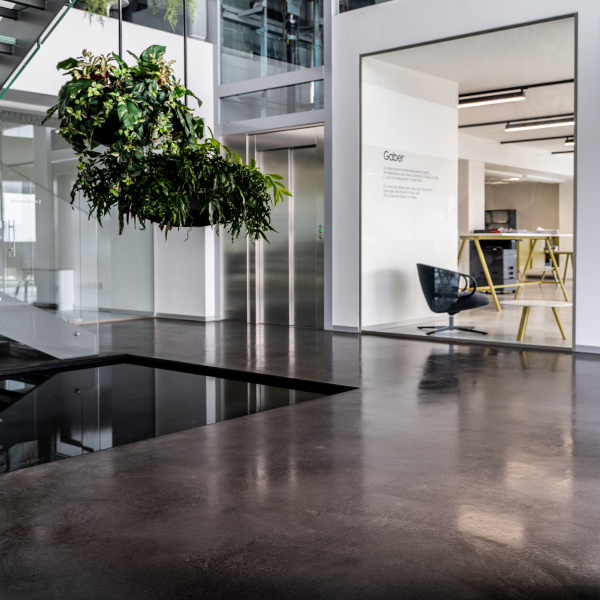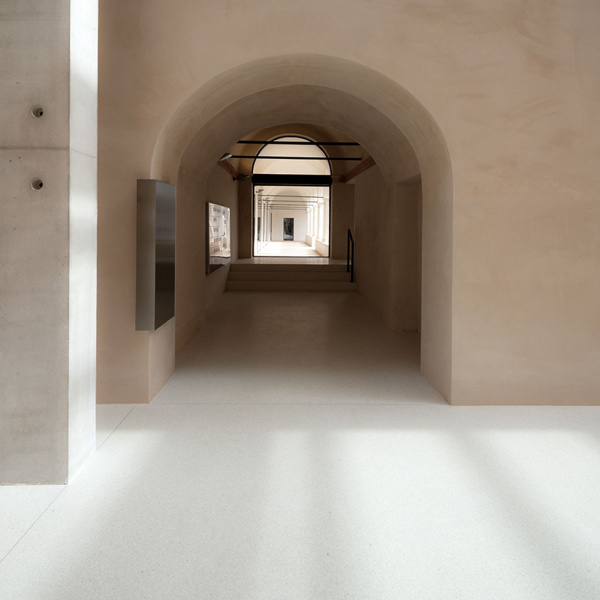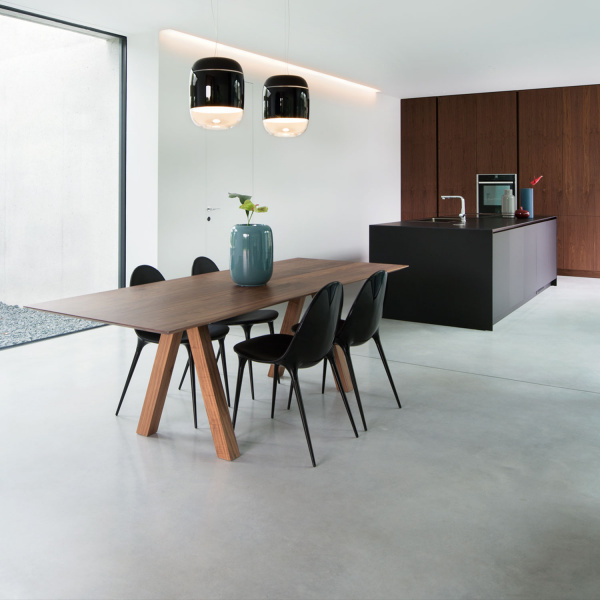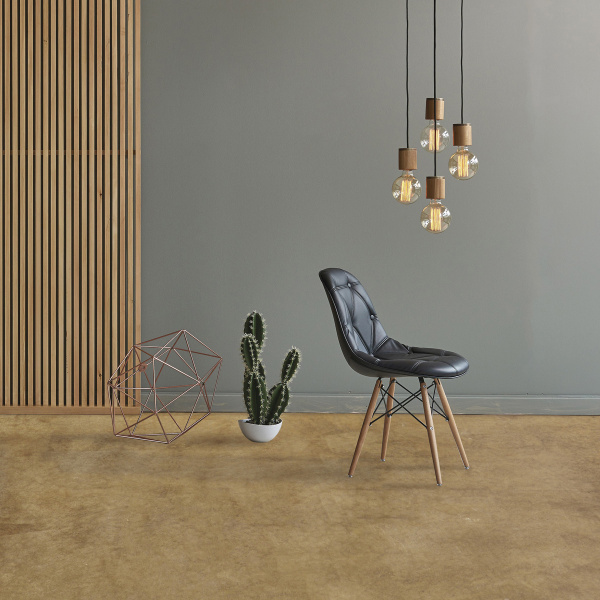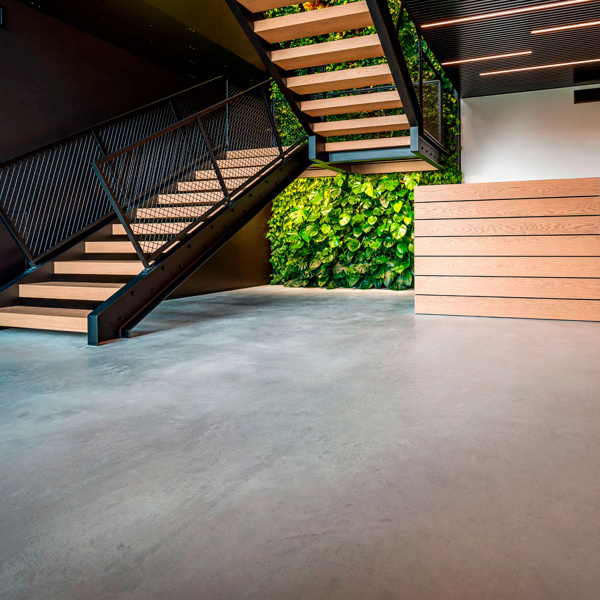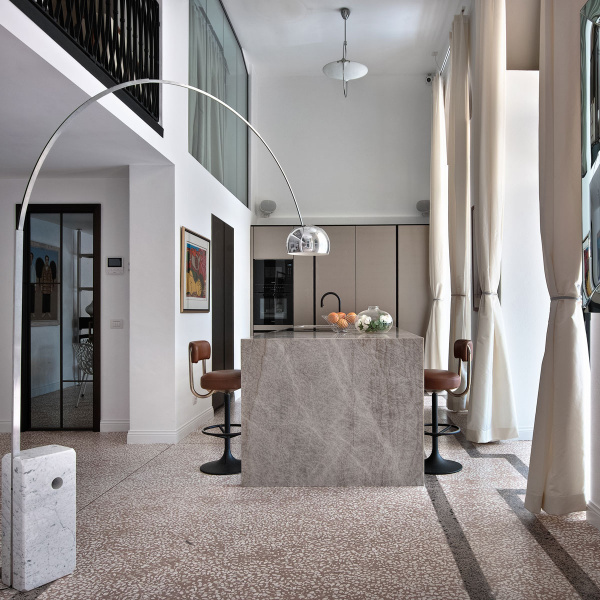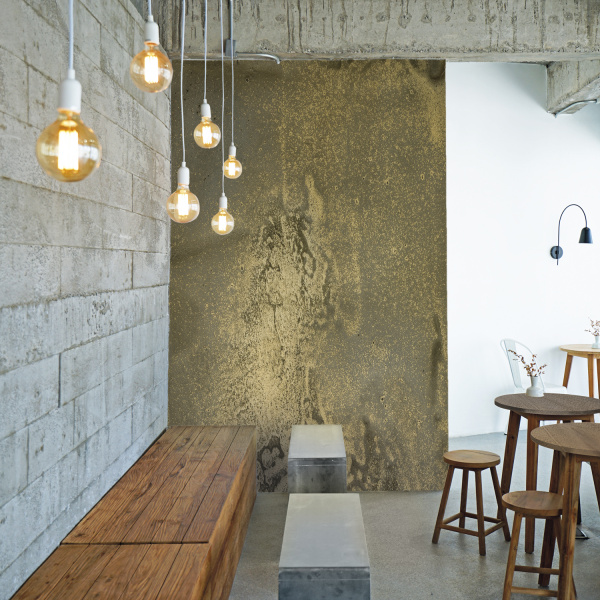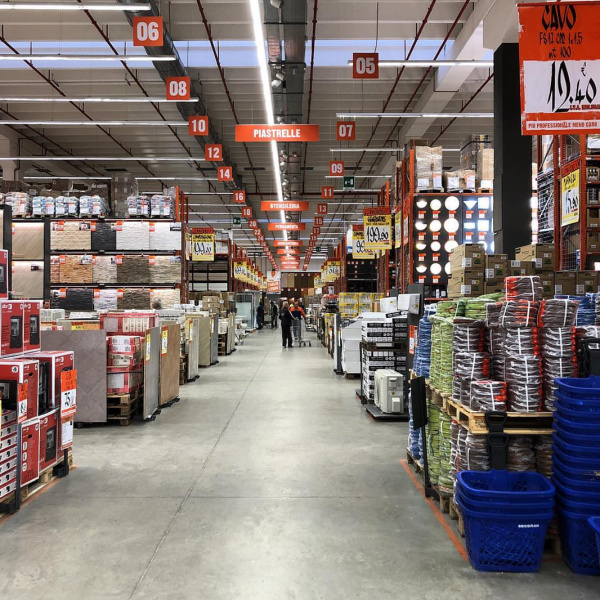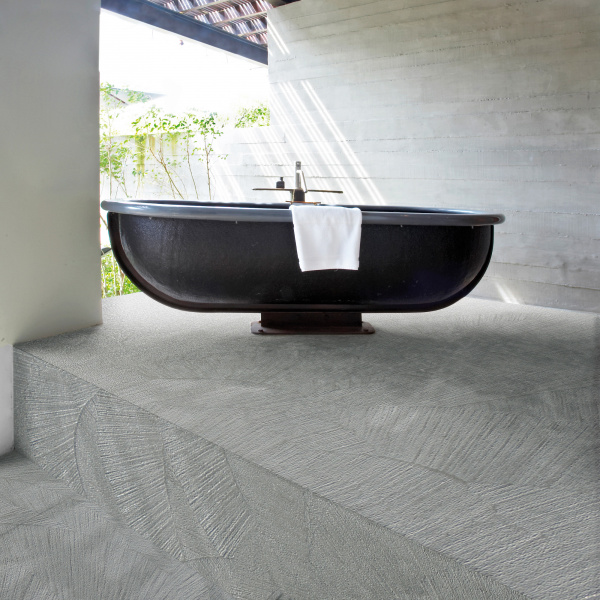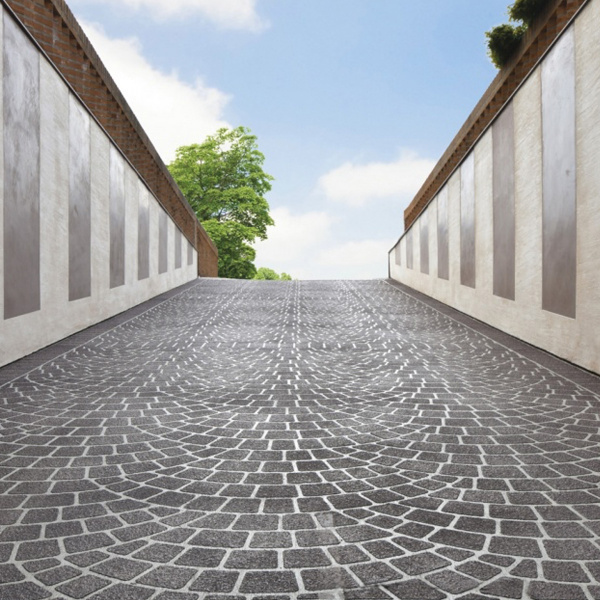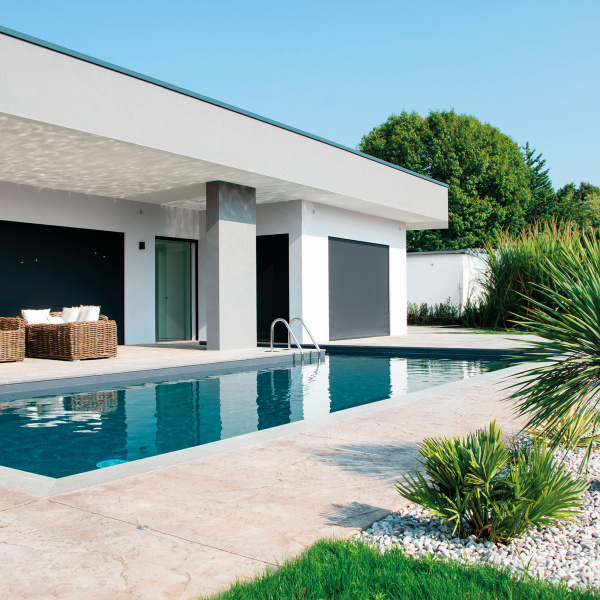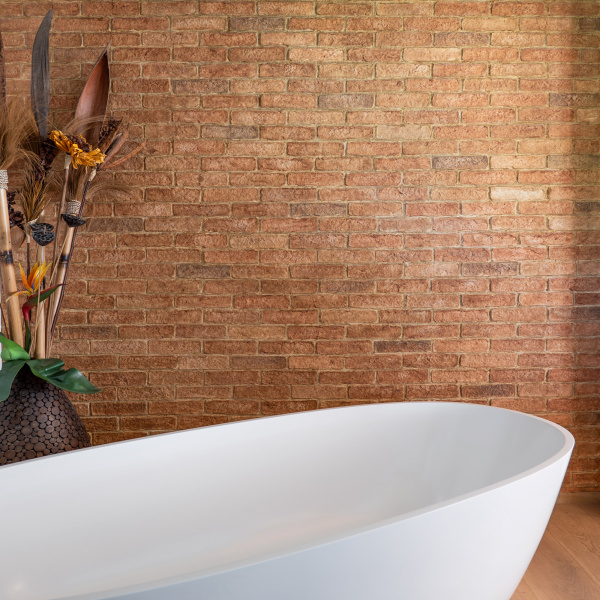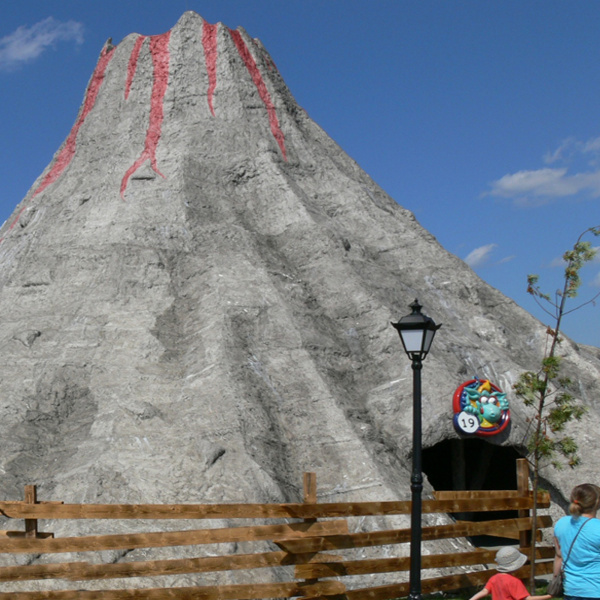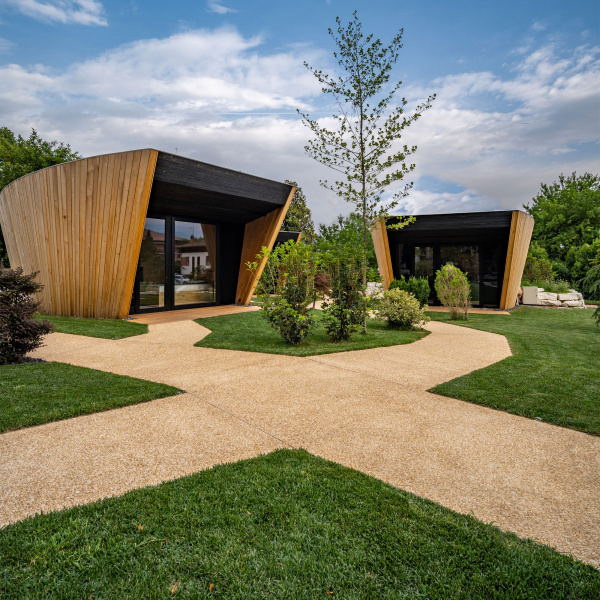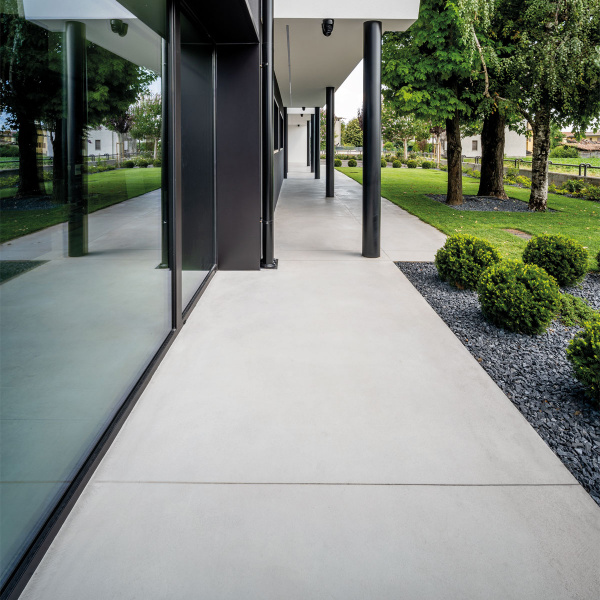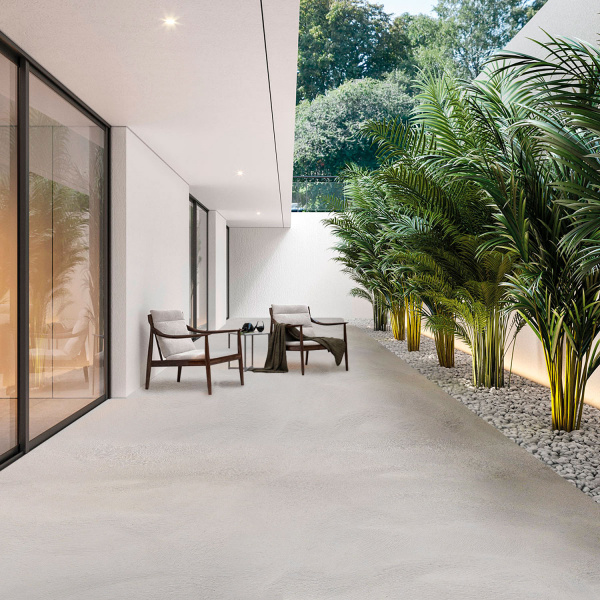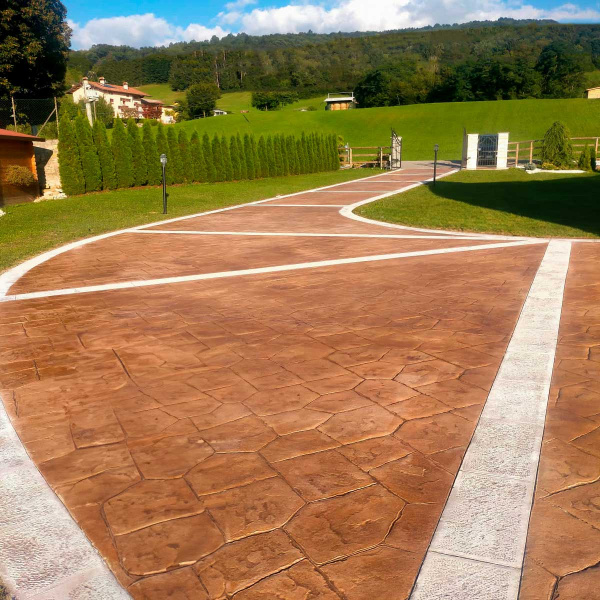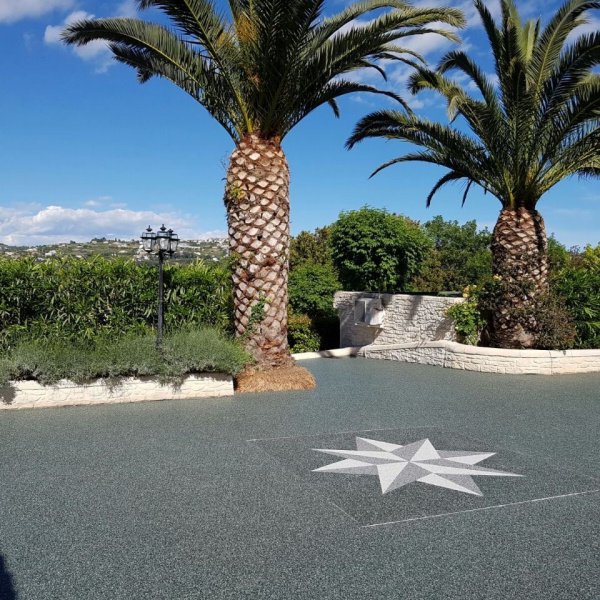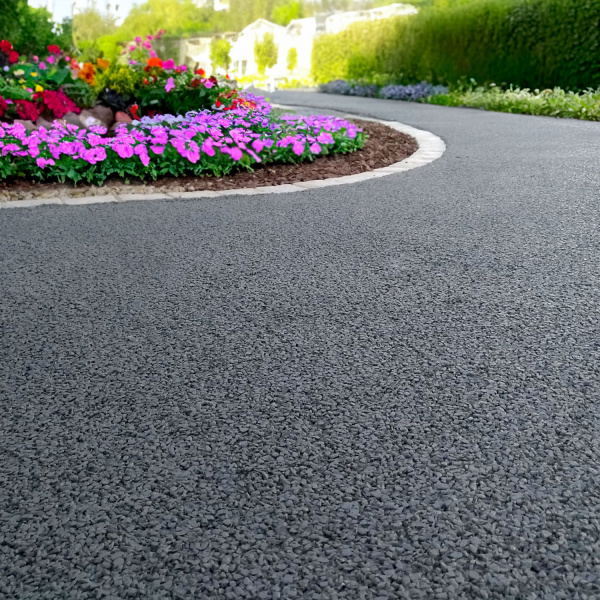The Venetian terrace is the symbol of timeless elegance. The floors made with this particular technique are characterized by geometries, mosaics, and delicate decorations capable of embellishing royal palaces and sacred places over the centuries, as well as simple private homes. Its unique appearance has been able to conquer designers of all kinds: a Venetian floor can be applied in a classic environment, but at the same time it can enhance a space focused on minimal and contemporary furniture.
A brief history of the Venetian terrace
To understand the success of the Venetian terrace, it is necessary to briefly retrace its history. Also known as Venetian-style seminato, this flooring is made with crushed stone and small fragments of marble, earthenware, and glass held together by a particular cement mortar.
The first examples of Venetian floors date back to Ancient Greece, where surfaces composed of simple cobblestones, subsequently embellished with decorative elements, began to be created. The first to replace the colored pebbles with real fragments of porphyry and marble were the Romans. A few centuries later, in the Byzantine era, the materials began to be cut into small tesserae that were essential for recreating marvelous mosaics that became a real must of the time.
But beauty has no boundaries, and so the technique reached its highest point under the Venetian Republic. It is no coincidence that it is called 'Venetian terrace'.
The master craftsmen, who took the name of “terrazzieri”, exploiting the precious materials coming from the trade with the East, enriched the floors with precious decorations, such as murrine, mother-of-pearl and gold coins.
How to make a Venetian floor?
The “terrazzieri” have handed down the techniques from generation to generation for making what they themselves call “Venetian battuto”. Even today, the creation of Venetian floors is largely done manually using mostly only natural materials.
Therefore, the manufacturing process is quite long and complex. Let's try to observe it together:
- First of all, the artisans create a very homogeneous background. In fact, the presence of differences in height could compromise the success of the Venetian terrace;
- Next, the first two preparatory layers are made. The first is composed of a mixture of materials, including cocciopesto and crushed stone. After the first layer has been laid and smoothed, the second layer (which will consist of the same materials) is laid, and in turn, carefully pressed and leveled.
- The preparatory layers must rest a few days before applying the third and last layer, which contains lime putty and is enriched with pigments to obtain the desired color.
- Then, the decorations that will give the Venetian terrazzo its unmistakable appearance are made. At this stage, craftsmen use wooden molds for the decorations or outline the designs with special lead wires.
- Finally, sanding is carried out using orbital machines to level the floor and let the grit come out on the surface
Venetian terrazzo requires the skills of craftsmen, and certainly not a short time. Moreover, given its quality and unique characteristics, Venetian floors are not particularly cheap: depending on the materials chosen, they range from 100 to 180 euros per square meter.
So, is there an alternative that can reproduce the incomparable charm of the Venetian terrace, requiring less demanding work and lower prices?
The answer is 'yes’, and it is called Isoplam® Terrazzoverlay. For decades, Isoplam has been producing concrete floors that can faithfully reproduce the most diverse designs. Among Isoplam's creations for micro-terraces are several examples of modern Venetian floors: take a look at the gallery to be surprised by their exceptional aesthetic result.
Creating a Venetian terrace with Isoplam®
This classic of the Italian tradition can be reproduced in a few moves thanks to Terrazzoverlay. You will have the possibility to decide from dozens of textures to ensure that your new Venetian terrazzo adapts to any context. Isoplam® solution is also extremely versatile: you will have the possibility to customize the Italian marble blend by adding mother-of-pearl and natural stone inserts. In short, the final result will be a unique floor, without equal, but capable of reflecting the magic of a technique that is envied and appreciated all over the world.
However, the advantages of Terrazzoverlay, do not stop at aesthetics: one of its strengths is represented by the low thickness that characterizes it. The coating is only 4-8 millimeters thick, a thickness that can be applied to existing surfaces without costly demolition work.
In addition to being adaptable to practically any surface, both internal and external, the Isoplam® micro-terrace is also extremely resistant and can be used in high traffic areas. For this reason, it is ideal not only for domestic spaces, but also in museums, shops, showrooms, and restaurants. Finally, its monolithic surface reduces maintenance operations to a minimum: to clean it, a cloth and a suitable detergent will be sufficient. Furthermore, the lack of joints makes the surface also hygienic, as dust and bacteria are hardly deposited.
How is Terrazzoverlay applied?
We have said that thanks to the application of Terrazzoverlay it is possible to shape modern Venetian floors in a much shorter time than with the traditional technique. Let's take a practical look at the steps that Isoplam® technicians will follow:
- Smoothing of the existing surface to make it even;
- Application of a coat of Skyprimer epoxy primer dusted with quartz to favor the adhesion of the next layer;
- Application of Terrazzoverlay: the special mixture of water-based binders, cement powders and fine Italian marble grit and other aggregates is spread in the desired thickness and smoothed.
- Smoothing and polishing: after 5-7 days you can proceed with sanding, grouting and polishing. Finally, the application of special protective agents make the surface resistant to stains.
Differences between Venetian flooring and Terrazzoverlay
Terrazzoverlay, as we have just seen, distinguishes from the traditional Venetian terrace (or Venetian-style seminato).
The first difference is in the mixing method: the classic Venetian terrace flooring is made by sowing the grit on a fresh cement bed and then worked, while the components of the Terrazzoverlay are mixed and then applied. This allows you to save time in the preparation phase.
The second difference lies in the different types of ingredients: Terrazzoverlay uses a special water-based additive that gives the surface greater resistance and elasticity. Precisely for this reason, by choosing a small grit, Terrazzoverlay can also be made in minimum thicknesses of only 4 mm.
The third distinction lies in the times of realization: whereas for classic Venetian terrazzo it is necessary to wait until the surface has cured before polishing (approx. 28 days), in the case of Terrazzoverlay polishing can be carried out already after 5-7 days.
Terrazzoverlay and underfloor heating
In residential homes, as well as in offices, there is an increasing use of practical, aesthetic, and functional underfloor heating / cooling. The purpose of this solution is to impact on energy consumption while avoiding the presence of unpleasant radiators. Thanks to its low thickness, Terrazzoverlay offers low thermal resistance, making it suitable for covering surfaces in the presence of radiant panels. Furthermore, its reduced thickness offers a further advantage over other coatings for radiant systems. In fact, thanks to the Terrazzoverlay surface, you can lower the system delivery temperature, contributing to even greater energy savings.
With Terrazzoverlay by Isoplam®, you can embellish your spaces with the elegance and timeless style of the Venetian terrace.
Be inspired by our creations and contact us for any information: fill out Isoplam contact form and nd they will reply you as soon as possible.






